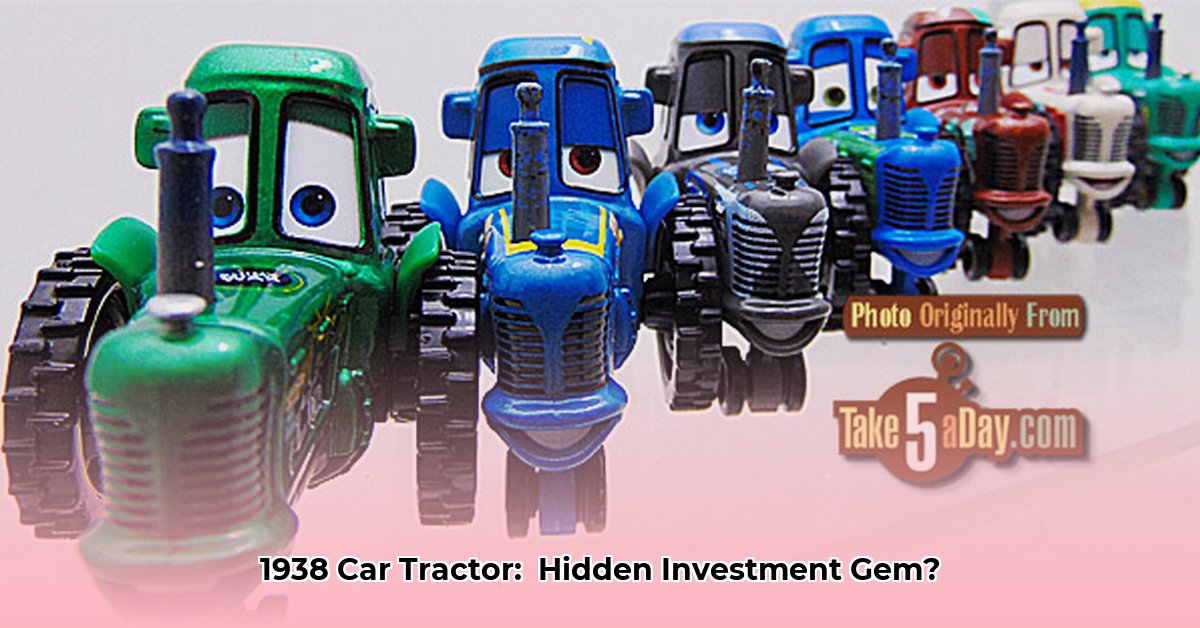
Car Tractor: A 1938 Minneapolis-Moline UDLX Investment Deep Dive
Imagine a gleaming olive-green 1938 Minneapolis-Moline UDLX, housed in a collector's garage. This isn't just any tractor; it's a rare blend of automotive comfort and agricultural power, produced in limited numbers (around 150). But is this unique piece of history a sound investment? Let's explore. For another example of a historically significant tractor restoration project, check out this 1939 Ford Tractor resource.
A Blast from the Past: The UDLX Story
The UDLX was revolutionary for its time. Picture this: an enclosed cab—a luxury unimaginable in most tractors of 1938! It boasted a speedometer, a clock, sun visors, and even a glove compartment! Essentially, it was a farmer's luxury car. However, this comfort came with a hefty price tag of $1,900—a substantial sum in 1938. This, coupled with its size hindering maneuverability in smaller fields, limited its market appeal.
More Than Just a Tractor: Collector's Item?
Despite its initial commercial struggles, the UDLX's rarity has transformed it into a coveted collector's item. Finding one today is a significant undertaking. This scarcity, naturally, inflates its value. Restoration—a labor of love—can yield a considerable return, but is it a financially prudent move? A rhetorical question, yes; but a pertinent one for the potential investor.
The Ups and Downs of Investing in a UDLX
Investing in a rare tractor like the UDLX is a specialized market with inherent risks and rewards. Let's analyze:
Advantages:
- Extreme Rarity: The limited production run (fewer than 150 units) guarantees inherent scarcity and value.
- Historical Significance: The UDLX represents a pivotal moment in agricultural engineering.
- Growing Collector Market: A dedicated community of enthusiasts sustains demand.
Disadvantages:
- High Purchase Price: The initial investment is significant, and restoration costs can escalate rapidly.
- Maintenance Challenges: Parts are scarce, necessitating specialized mechanics and potentially high repair bills.
- Market Volatility: The value of collectible vehicles fluctuates, making predictions difficult.
Your UDLX Investment Guide: Steps to Success
Considering a UDLX purchase? Follow these steps:
- Historical Research: Thoroughly investigate the UDLX's history, strengths, weaknesses and unique characteristics.
- Market Analysis: Study auction results and market trends to gauge current value and potential appreciation.
- Expert Consultation: Seek advice from seasoned tractor experts and restoration specialists.
- Pre-Purchase Inspection: Hire a qualified mechanic for an independent evaluation to avoid costly surprises.
- Authenticity Verification: Ensure the tractor's genuineness and provenance are thoroughly documented.
- Budgetary Planning: Account for all potential expenses: purchase price, restoration, maintenance, and insurance.
Managing the Risks: A Quick Overview
Let's summarize potential pitfalls and mitigation strategies:
| Risk Factor | Risk Level | Mitigation Strategy |
|---|---|---|
| Tractor Condition | High | Independent pre-purchase inspection by a qualified mechanic |
| Market Fluctuation | Medium | Continuous market monitoring; investment diversification |
| Parts Availability | High | Proactive contact with parts suppliers and networking with other UDLX owners |
| Authenticity Verification | High | Thorough documentation review and verification from reputable sources |
Investing in a 1938 Minneapolis-Moline UDLX is a high-stakes venture. However, with careful planning, informed decision-making, and a nuanced understanding of the market, the potential rewards can outweigh the risks. It's not for the faint of heart, but for the discerning collector, the UDLX represents a unique and potentially lucrative investment.
How to Restore a 1938 Minneapolis-Moline UDLX Tractor
The Allure of the UDLX
The Minneapolis-Moline UDLX, with its enclosed cab, speedometer, and clock, was a radical departure from the norm in 1938. Its rarity (only about 150 produced!) makes restoration a significant undertaking.
Why is Restoring a UDLX So Difficult?
The UDLX’s unique design presents considerable challenges. Sourcing parts is incredibly difficult; many components are model-specific. Specialized mechanical knowledge is also essential, combining automotive and agricultural expertise.
A Step-by-Step Approach to Restoration (Simplified)
- Assessment: Meticulously document the tractor's condition, noting missing or damaged parts.
- Parts Procurement: Start your search for parts early; networking and online forums are crucial.
- Disassembly: Carefully disassemble the tractor, documenting every step.
- Repair & Restoration: Repair or replace components, potentially utilizing welding or machining techniques.
- Reassembly: Reassemble the tractor, following the disassembly documentation.
- Testing & Refinement: Test all systems and make necessary adjustments.
Weighing the Investment: Pros and Cons
| Pros | Cons |
|---|---|
| Unique and Rare Collectible | Extremely High Restoration Costs |
| Potential for Significant Appreciation | Parts Sourcing Challenges |
| Historical Significance | Specialized Knowledge Required |
| Rewarding Restoration Project | Uncertainty in Market Value |
| Potential for high return on investment | Time-Consuming and Labor-Intensive Restoration |
The UDLX in the Collector's Market
The UDLX's market value is highly variable; condition, originality, and provenance heavily influence price. Always obtain a professional appraisal before purchasing. Meticulous record-keeping during restoration is crucial for establishing authenticity and value.
Key Takeaways:
- The 1938 Minneapolis-Moline UDLX is a rare and valuable collector's item.
- Its unique design blends automotive and agricultural engineering.
- Restoration is challenging and costly, requiring specialized skills and parts.
- Market value is highly variable and dependent on condition.
- Careful research and planning are essential for collectors and investors.